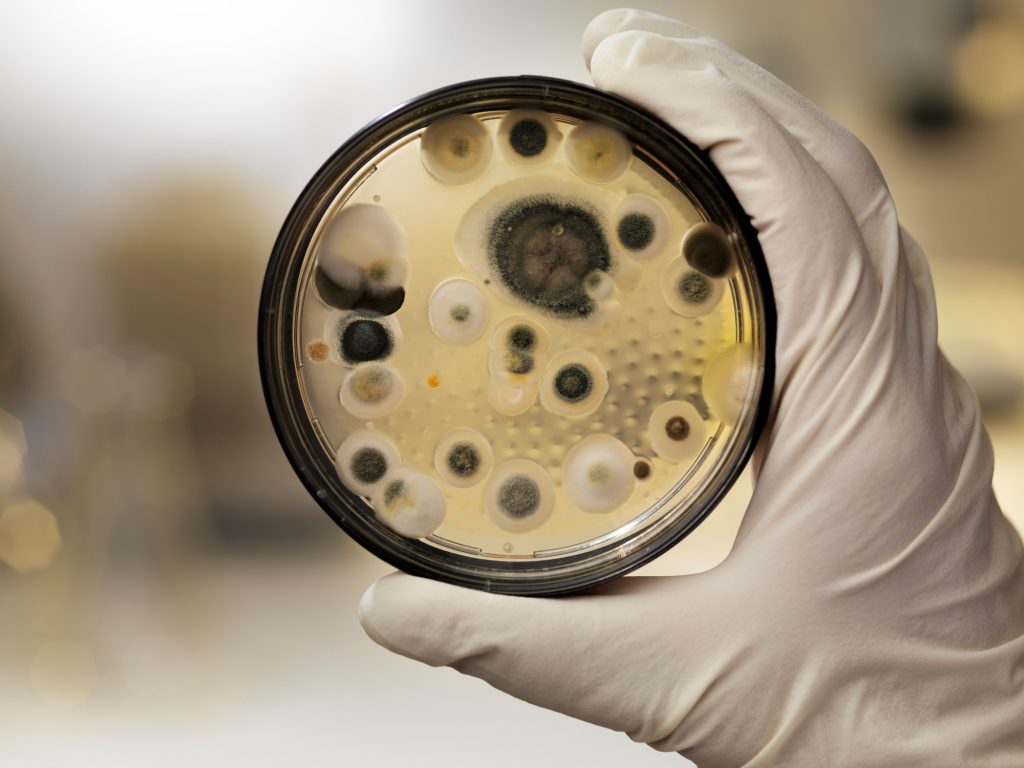Blog
How to Identify & Remove Black Mold
Mold presents itself in various ways, many of which are non-hazardous. Yet no matter how harmless, no one wants to see mold in their home.
Stachybotrys chartarum, commonly known as Black mold, is a variety of mold that while usually easy to spot, can be particularly difficult to remove. What’s more, if not removed promptly, it can cause respiratory issues and reactions in people with allergies or weakened immune systems. It grows quickly and thrives on cellulose-rich materials like drywall and wood, particularly in damp areas.
Read on the learn how to identify black mold and how to remove it.
Mold Detection & Removal
First, be sure to wear protective gear when attempting to identify, touch, or clean black mold. This includes a protective face mask, safety goggles, and non-porous gloves. Also keep in mind that microscopic spores can remain on surfaces and grow if not properly cleaned.
How to Identify Black Mold
Because black mold often first appears inside walls and air ducts, chances are you will smell it before you see it.
1. If you notice a musty smell in your home, inspect accessible air ducts, the areas beneath kitchen and bathroom cabinets, sealants and grout near the tub/shower, and any other high moisture-prone areas.
2. Once you think you have spotted mold, inspect the color. Sure, black mold will generally be black, but it can appear dark grey, green, or brown before turning black.
3. Try to locate the source of the odor. Again, you will likely smell it before you see it. Matured black mold has a pungent earthlike smell, like that of rotting leaves. If it appears on an interior wall, you might have a hidden pipe leak.
4. Check the texture. Black mold tends to be slimy or wet, though early forms can have a powdery feel. Only rub the mold with a paper towel while wearing protective clothing. Never touch suspected black mold with bare hands. If you do, promptly run your hands under hot water and wash thoroughly with soap.
5. Confirm the presence of black mold with a test kit. These can be purchased at most home improvement stores.
6. If the black mold is in its early stages and localized to a small area, you should be able to remove it yourself with tea tree oil, vinegar, sodium borate, or bleach. Clean with a nylon bristle brush and paper towel. If it’s mature black mold, in a hard-to-reach spot, has spread, or you are concerned about its health hazards, contact a mold removal specialist.
Here at Messmer Mechanical, we can help too by searching for and locating water leaks that may be responsible for a mold infestation. Our specially designed leak-detection equipment makes the job easier and simplifies the pipe repair or replacement process. For water leak repair, hidden or readily visible, contact Messmer Mechanical, your local plumbing experts.
Our Service Partners Get it All.
Enroll in our Service Partner Plan and enjoy added value plus proactive greater and protection for your home comfort equipment.
- Annual inspections
- Lower energy costs
- Priority service
- Fewer repairs
- 10% off heating & cooling repairs identified during annual preventive maintenance
- Annual Plan Renewal
- And more
Become a Plan Member and take advantage of the savings today!

